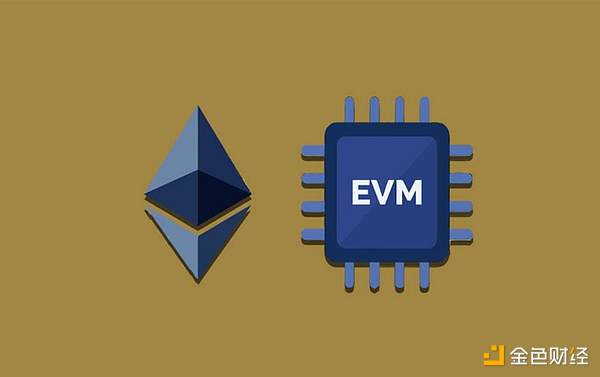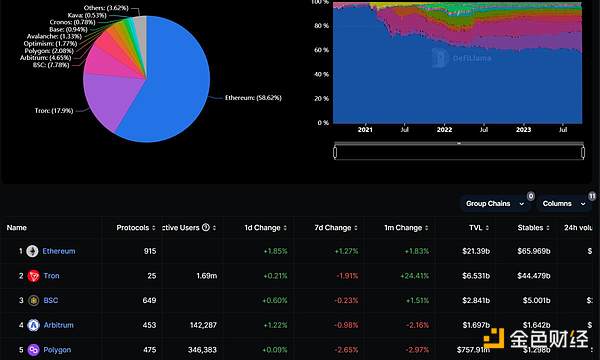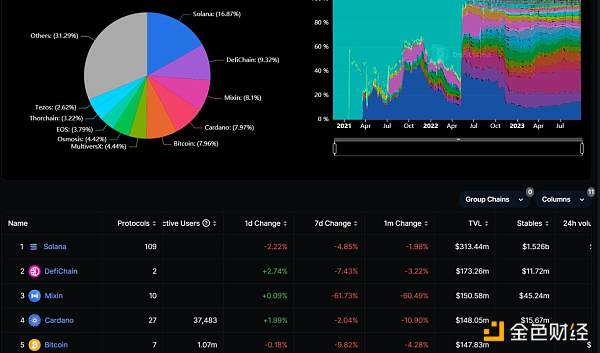EVM compatibility helps developers attract traffic and expand the ecosystem, while non-EVM compatibility allows developers to experiment and innovate.
On September 12th, the blockchain wallet MetaMask launched a beta feature called Snaps, which allows third-party developers to customize wallet features and mechanisms. This enables the MetaMask wallet to seamlessly operate assets on non-EVM blockchains. This version can be seen as another step towards complete unconditional and decentralized MetaMask; another noteworthy point is that MetaMask is also becoming compatible with non-EVM. This article will analyze the differences between EVM and non-EVM to further understand the similarities and differences between these two blockchain virtual machines.

EVM and Non-EVM
Ethereum Virtual Machine (EVM)

- Review | Balancer Vulnerability Analysis
- SharkTeam Analysis of Typical Phishing Attacks on On-chain Asset Transfer
- What other tricks does Cosmos have? Interpreting the Interchain Stack 2024 Roadmap
The Ethereum Virtual Machine (EVM) is the first virtual machine created for the blockchain industry. It is an abstraction layer between physical machines (nodes) and smart contract code. It can isolate programs running on it from each other and separate them from the main chain of Ethereum. In simple terms, it is a chain created based on the Ethereum ecosystem, which allows for rapid development and iteration, reducing development workload and avoiding starting from scratch. Each Ethereum node runs an instance of the EVM, and they work together to form a network or a globally decentralized computer. As Vitalik Buterin said, Ethereum is even referred to as the “world computer”.
The EVM is the heart and soul of the Ethereum network, and it is also the platform for deploying and executing smart contracts. The physical instantiation of the EVM cannot be described in the same way as clouds or waves, but it does exist as an entity maintained by thousands of connected computers running Ethereum clients. EVM is Turing complete, which means it will find the answer if there is a problem. Users can use the Ethereum programming language Solidity to create smart contracts and send them to the EVM for interpretation and execution. In simple terms, the advantage of EVM is that it is easier to achieve interoperability with the Ethereum ecosystem, inheriting the existing dApps on the Ethereum chain. However, the disadvantages are also obvious, being constrained by the Ethereum roadmap, which may interfere with the project’s plans and require following the pace of Ethereum.
Non-EVM Virtual Machine (Non-EVM)
Other blockchains have chosen a different path from EVM compatibility, known as non-EVM blockchains. Non-EVM means completely independent of the Ethereum ecosystem, a blockchain virtual machine rebuilt by developers and projects. This means that non-EVM is independent of the Ethereum roadmap, so it has lower costs and faster speed than Ethereum. However, it also faces many obstacles, as developers and users need to enter a new ecosystem with higher entry costs. Nevertheless, it is obvious that non-EVM chains have greater innovation space and are not limited by Ethereum.
Differences between EVM and Non-EVM

EVM is compatible with Ethereum, while Non-EVM is not compatible with Ethereum. For example, they are like two different smartphone operating systems. Android is EVM, and iOS is Non-EVM. All applications developed based on the Android system can be used on Android phones, which we collectively refer to as EVM. On the other hand, software developed based on the iOS system cannot be installed and used on Android systems, which we collectively refer to as Non-EVM.
Some well-known EVM chains include Ethereum, Bsc, Arbitrum, Polygon, and Avalanche, while Non-EVM chains include Solana, Mixin, DefiChain, Osmosis, and EOS.

Currently, most of the top ten blockchains are compatible with EVM, and EVM remains the market leader in the public chain space. However, the growth rate of emerging Non-EVM blockchains is also very rapid.
Functions of EVM and Non-EVM
The functions of EVM and Non-EVM (collectively referred to as blockchain virtual machines) are to determine and track the state of each network block. Although it may sound like a monitoring tool, it actually refers to state changes, which are signals or causes of actions in various computer systems. For example, when certain content is opened or closed, activated or deactivated, sent or received, or when files or documents are moved, state changes occur. These state changes lead to modifications of the data structure of the computing system.
Blockchain virtual machines can examine the changes in network and dApp states, allowing the public chain and its on-chain dApps to work in a decentralized manner while addressing issues such as network saturation or operation priority. In this way, blockchain virtual machines enable any developer to run code in an ecosystem that does not rely on third-party trust, and the execution and interaction of the software are guaranteed and predictable.
The Debate between EVM and Non-EVM
There has been an ongoing debate between EVM chains and Non-EVM chains. Although EVM virtual machines may seem like the obvious winner, Non-EVM chains such as Solana have made this battle worth paying attention to. EVM compatibility is a primary requirement for evaluating public chain platforms.
With the advantage of Ethereum, EVM-compatible public chains can quickly acquire customers and grow in the early stages, benefiting from developer friendliness, user experience, and ecosystem incentives. However, they have to compete with many other chains in the Ethereum ecosystem. On the other hand, Non-EVM-compatible chains are more likely to thrive in trend-driven areas and niche markets where new ideas emerge. Additionally, various public chains can succeed in areas such as NFTs, GameFi, and payments.
Overall, it is difficult to say which is better between EVM chains and Non-EVM chains. Attracting Ethereum traffic is the fastest way for new chains to grow, and EVM compatibility is the most convenient solution. Non-EVM chains can choose their development direction according to their needs without being constrained by the main chain.
Let’s take a look at the advantages and disadvantages of EVM and non-EVM to understand the actual situation.
Advantages and Disadvantages of EVM and Non-EVM
EVM
Advantages of EVM
As mentioned earlier when introducing EVM, anyone can develop decentralized applications with EVM without any security barriers or restrictions. EVM is scalable and the migration process from the Ethereum ecosystem is relatively simple, making it easier for users to access projects. Thanks to the convenience of EVM, NFTs have become one of the popular contents in the crypto world.
Disadvantages of EVM
Although decentralized, the EVM network is not completely decentralized. The majority of Ethereum nodes are hosted on centralized cloud servers of Amazon Web Services. If the operators of these services decide for any reason that they don’t like Ethereum, the nodes may be rejected, which would harm the network.
During network congestion, gas fees can be high. This can cause serious inconvenience for Ethereum users. While people sending large transactions may not be affected, those sending small transactions may experience network accessibility issues for a period of time. If gas fees are too high when many users interact with DApp smart contracts and perform a large number of transactions, it will bring many negative impacts to the project.
Due to its bytecode language and limited native functionality, EVM is overly complex and lacks sufficient virtual machine capabilities for security design. In addition, due to the rules of Ethereum and EVM, designers need to implement many key parts of EVM’s functionality and execution model themselves.
Non-EVM
Advantages of Non-EVM Blockchains
Non-EVM allows programmers to expand their user base and application scope. For example, projects like Raydium and Serum on Solana are exclusive to Solana. Terra, once a unique public chain, aims to connect on-chain and off-chain payments. In addition, platforms that are incompatible with EVM can provide fast transaction times and cheap transactions for end users.
These advantages make non-EVM blockchains an emerging choice in specific use cases and markets, providing developers and users with more choices and flexibility.
Disadvantages of Non-EVM Blockchains
High development costs: Chains that are incompatible with EVM may require additional development work to adapt to their unique ecosystems and rules, which can lead to increased development costs.
High entry barriers: Non-EVM compatible chains may have higher entry barriers for developers and users as they need to adapt to new tools, technologies, and ecosystems.
Project migration difficulties: Migrating a project from an EVM compatible chain to a non-EVM chain may face some challenges, including the need to rewrite smart contracts and adapt to a new ecosystem.
Due to the obvious disadvantage in terms of the number of projects, developers tend to choose EVM compatible chains.
Because they can be quickly replicated and deployed on new chains, this can help save time and costs.
Conclusion
So, who wins in the competition between EVM and non-EVM chains? There is no clear winner between the two because each situation is unique, and developers must choose a public chain that corresponds to the development path of their project. Different projects and use cases may be better suited for different chains, so there is no chain that can be absolutely chosen as superior to another; decisions should be made based on specific needs and project goals. EVM compatibility can help developers attract traffic and expand the ecosystem, as Ethereum users can quickly migrate to new chains. At the same time, non-EVM compatibility undoubtedly allows developers to experiment and innovate.
In the blockchain field, there is no chain that can meet all needs, so developers and project teams must make choices based on their unique goals and use cases in order to achieve the best results. Therefore, in the long run, the future will not be dominated by EVM alone, but rather the coexistence of multiple chains is the direction of blockchain. After all, the diversity and constant evolution of the blockchain ecosystem is its essence.
Like what you're reading? Subscribe to our top stories.
We will continue to update Gambling Chain; if you have any questions or suggestions, please contact us!